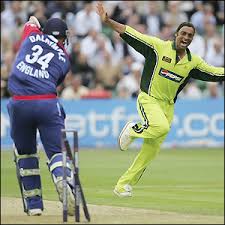Team structure
A team consists of eleven players. Depending on his or her primary skills, a player may be classified as a specialist batsman or bowler. A well-balanced team usually has five or six specialist batsmen and four or five specialist bowlers. Teams nearly always include a specialistwicket-keeper because of the importance of this fielding position. Each team is headed by a captain who is responsible for making tactical decisions such as determining the batting order, the placement of fielders and the rotation of bowlers.
of the importance of this fielding position. Each team is headed by a captain who is responsible for making tactical decisions such as determining the batting order, the placement of fielders and the rotation of bowlers.
A player who excels in both batting and bowling is known as an all-rounder. One who excels as a batsman and wicket-keeper is known as a "wicket-keeper/batsman", sometimes regarded as a type of all-rounder. True all-rounders are rare as most players focus on either batting or bowling skills.
No comments:
Post a Comment